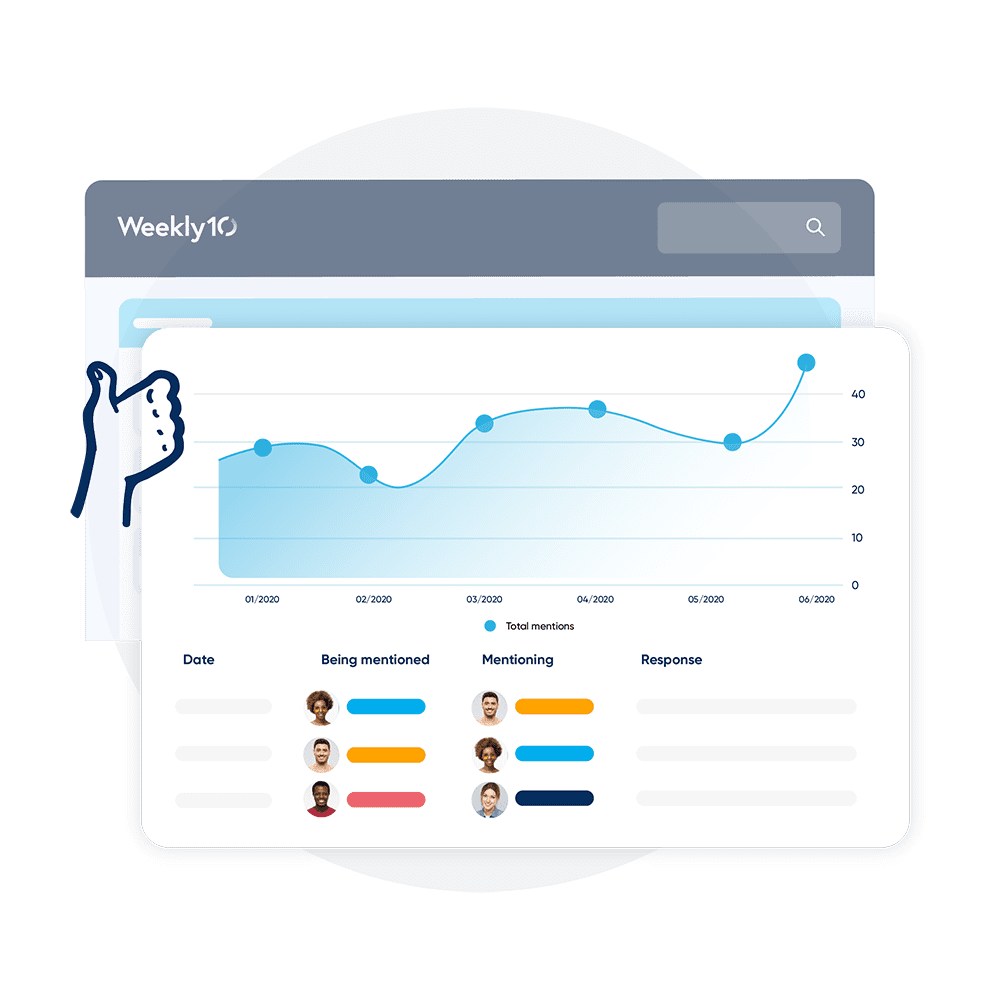

10 tips for how to manage employee performance
Traditional performance processes weren’t working pre-pandemic. So what hope do they have of being fit for purpose today? If you're a manager wondering how to manage employee performance without using dreaded archaic performance reviews, then read on.
What’s the usual response to performance reviews? Do your employees cringe as they know it’s a box-ticking exercise? Do they avoid or delay conversations because they won’t change anything, and sigh at the thought of tracking down the latest 12-page template?
In our A-Z of Effective Performance Management, we explored what really matters when it comes to successfully managing a team. The guide’s designed to be a cheat sheet for managers to review their own performance processes and make them fit for the new world of work. It walks managers through how to manage employee performance in a supportive way.
Here's the 10 things you need to know when you're deciding the most effective way to manage employee performance.
01. Alignment equals success
91% of "exceptional companies" align employee goals to business objectives. Also, when employees see how their own performance impacts company outcomes, they’re 3.5 times more likely to feel engaged with their work.
Autonomy and having a sense of purpose are both key to our motivation. Alignment tells employees what's expected of them and why. By helping your people to see and understand the bigger picture, and showing them the impact they have, you increase their motivation to deliver the extraordinary.
02. High engagement drives better performance
Multiple studies have proven that engagement and performance are strongly linked. And that high engagement leads to better performance. 79% of business leaders strongly agree that their most productive employees are their most engaged ones. So, stop treating them separately.
Employee engagement typically sits with HR whereas performance management is driven by managers. Both need to be better aligned for organisations to get the best from their people. Read up on the link between peloyee engagement and performance.
03. Feedback at work is the lifeblood of great performance
You’re setting yourself up to fail if regular feedback isn’t at the heart of your performance management strategy. 81% of managers of high-performing teams believe two-way, transparent workplace feedback is their most effective tool in driving business success.
Honest, constructive, feedback between managers and their people encourages personal development and better performance. Not just for the employee but for their manager too.
A regular, structured way to give and receive feedback means employees can ask for – and get – help when they need it. And managers can step in earlier if things are going awry instead of waiting for that project review meeting or the quarterly appraisal. When feedback is regular, performance just gets better.
04. How to manage employee performance with goal setting
Simply setting goals will boost performance. In fact, one study found that by setting an employee a goal, performance improved organically 90% of the time. Another showed that having goals set improved the speed at which people work.
But beyond this, goal setting is vital to great performance management for three key reasons:
- You can’t have alignment without goals.
- Goals motivate employees, giving them direction and purpose.
- Goals are measurable. You know how effective you’re being.
But goals need to be set effectively. And you do that by aligning personal goals to business outcomes using OKRs or goals.
05. OKRs provide more transparency
When you're considering how to manage employee performance, setting goals helps to keep your people focused. Objectives and Key Results (OKRs) are a light-weight, fast-cadence model for goal-setting. They create alignment between company and personal goals, and engagement around measurable outcomes.
Instead of annual static planning, OKRs take an agile, ambitious approach. This allows organisations to better respond to change. They also take account of strategy and tactics having different tempos.
To achieve complete alignment, OKRs are public to everybody within the company, and set, tracked, and reviewed regularly.
06. Performance reviews don’t need to be painful
Love them or hate them, performance appraisals have been the backbone of performance management since the 1950’s. But they've become stale, ineffective, and costly. And for the most part, are a waste of time. It’s time this changed. Effective leadership in the modern workplace means knowing how to manage employee performance without regressing to the useless norm.
Effective reviews aren’t about chastising employees for past performance. Instead, they need to focus on the bad habits that need breaking or the good ones that need encouraging. Identifying and playing to an employee's strengths can help them take pride and be more driven in their work. And when you do need to have a difficult conversation about someone's performance or behaviour, be constructive, be willing to listen and compromise, and come armed with solutions.
Used correctly, performance reviews will deliver their intended purpose: helping your people to improve.
07. The right questions can unlock performance potential
The best way to get effective feedback is through an employee check-in.
Whether you choose to use a weekly check-in, run a regular survey or ask your teams for a weekly email, the questions you ask will make or break their success.
But you need to understand a few key concepts about how to ask questions well. Doctors, teachers, and journalists having training on how to ask questions well. But managers aren’t. They also understand bias, cadence and when to respond. See the A to Z for how to ask better questions.
08. Recognising great work drives better performance
Lack of recognition or appreciation was the most common reason for leaving a job in 2020. When people’s work goes unnoticed, disengagement sets in. They become demotivated and ultimately may well look to the exit sign.
Recognition isn’t complicated. Nor is it expensive. A simple thank you or a shout-out in your next all-hands meeting works better than financial rewards. However you choose to do it, recognising the efforts of your people will keep them at the top of their game, and increase their loyalty.


09. Transparency is critical for managing employee performance
Transparency is a priority. This isn’t just because it’s the right thing to do; it directly influences engagement and we all know that engaged people perform better. Engagement increases when people know that the work they're doing has a purpose, and that it contributes to business success.
Studies have found that organisational transparency is the most significant predictor of employee happiness. Leaders who are open and honest are rated as being more trustworthy by their employees. This increases the effectiveness of feedback and any subsequent performance process.
10. Managers are the secret sauce to employee performance
It’s often underappreciated and certainly under-reported, but the influence managers have on the performance of your people is hugely significant.
Managers account for 70% of all variance in employee engagement scores. And nearly 75% of US job leavers in 2017 cited their manager as one of the key reasons for leaving their job.
The way that managers communicate with their people underpins the manager-employee relationship. From the goals you set through to the rapport you build.
Learn how a weekly employee check-in is the foundation of moving to more modern ways to manage employee performance. Download our latest guide: Embracing continuous performance management





